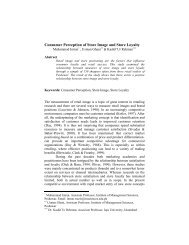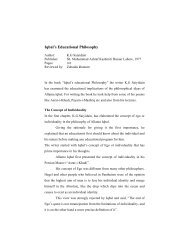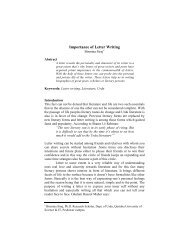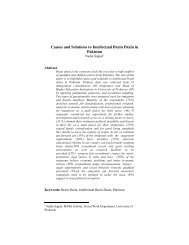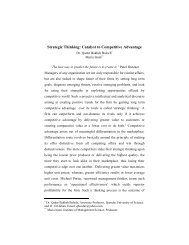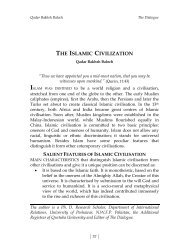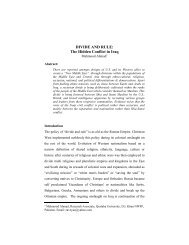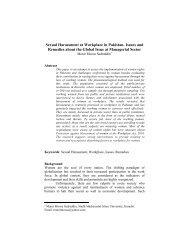COLD WAR POLITICS OF SUPERPOWERS IN SOUTH ASIA Abstract
COLD WAR POLITICS OF SUPERPOWERS IN SOUTH ASIA Abstract
COLD WAR POLITICS OF SUPERPOWERS IN SOUTH ASIA Abstract
You also want an ePaper? Increase the reach of your titles
YUMPU automatically turns print PDFs into web optimized ePapers that Google loves.
Pakistan. The war played the role of midwife at the birth of Bangladesh. It<br />
also played an essential role in India’s victory over Pakistan, which was no<br />
longer able to mount a credible challenge to India. While the Soviets-<br />
Americans and Chinese rivals in the first test of the new “anti-Soviet axis,”<br />
had both lined up on the side of the clear loser, the Soviet Union stood firmly<br />
with India and it emerged unchallenged as the top ranking external power in<br />
South Asia. A Soviet diplomat at the United Nations exulted: “This is the first<br />
time in history that the United States and China have been defeated<br />
together.” 100<br />
Moreover, in the late 1970s the Soviet objectives in South Asia were relatively<br />
based on Indo-Soviet collaboration to counter the Sino-US and Pakistan<br />
alignment and to minimize Chinese influence in the region. In this respect,<br />
Howard Wriggins characterized the US policy towards South Asia from 1965<br />
to 1979 as one of “minimum concern....perhaps encapsulated in the<br />
proposition’ they can do little good, but also little harm.” 101 Thus, with the<br />
Soviet intervention in Afghanistan in 1979 the US was forced to recognize the<br />
region’s strategic importance and establish relations with Pakistan in order to<br />
contain communism. China also cooperated with the United States to counter<br />
Soviet adventurism. Moreover, the period of 1970-79 proved to be<br />
unsuccessful for the Soviet diplomacy in terms of geopolitical perspective.<br />
Events in the countries of South Asia were demonstrating to the Soviet Union<br />
that backsliding was always a danger for the young fragile regimes. Thus, the<br />
Soviet Union’s dream of countering the US and Chinese influence in the<br />
region collapsed with its own demise and disintegration.<br />
Sino-Soviet Confrontation<br />
In the late 1960s, the Soviet and Chinese foreign policy interests came into<br />
conflict and their world views began to diverge rapidly. China developed a<br />
more radical policy against the imperialist West and the United States.<br />
97




